ODYSSEY



On a bridge overlooking an impossible future, what did Malachi McNeill do?



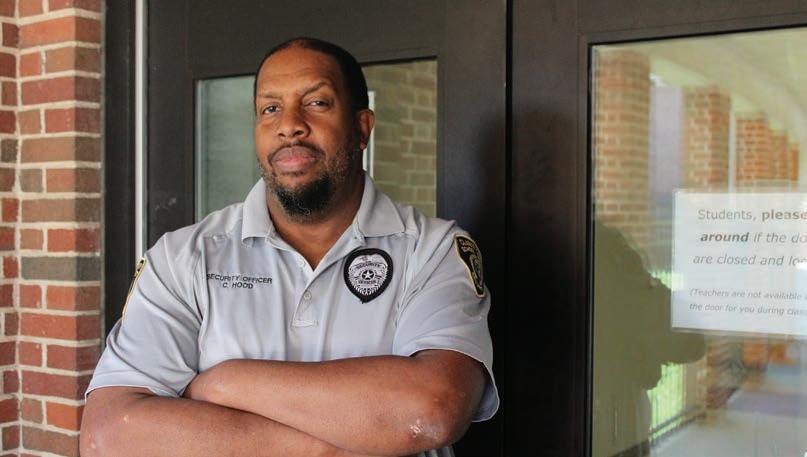



The deadly Apalachee High School shooting has cast a new spotlight on CCHS safety and security.
BY LIZA LARSON
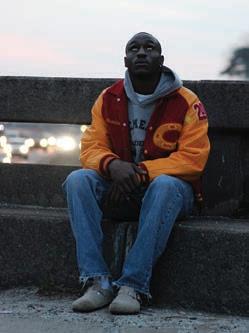
MY WORD VS. YOURS: TIKTOK BAN HERE WE GO AGAIN!
Social Media Coordinator Liya Taylor and Digital Editor Lea D’Angelo debate the drawbacks and benefits of a potential TikTok ban.
BY LIYA TAYLOR and LEA D’ANGELO
The CCHS and Cedar Shoals High School drama programs are joining for the third time to bring their production of “Mamma Mia!” to the CCHS E.B. Mell Auditorium in April.
BY EMLYN MCKINNEY
Performers from across the South performed at Athens’ arthouse cinema Ciné for a night of Black creative expression on Feb. 8.
BY CESIA MARTINEZ and WYATT MEYER
CCHS Class of 2023 alumnus
has found purpose in life after dealing with depression and suicidal ideation.
BY COOPER JONES

Since the Inauguration of President Donald J. Trump on Jan. 20, the push for a federal abortion ban has swiftly begun — and no woman is spared.
BY JANE RIPPS

Journalism I students showcase examples of Black history, joy and excellence in members of the Athens community.
BY THE JOURNALISM I CLASS AND LEA D’ANGELO
SHAPING THE FUTURE: Q&A WITH PATRICIA RICHARDS

Patricia Richards, the Director of the Institute for Women’s and Gender Studies at UGA, discusses her career as well as the importance of Women’s History Month.
BY ADAH HAMMAN

The CCHS varsity baseball team beat Cedar Shoals High School on Senior Night at A.B. Weathersby Field on March 3.
BY MA’KIYAH THRASHER
he ODYSSEY is a student-produced news publication, published with the intent to inform, entertain and give voice to the Clarke Central High School community, as well as to educate student journalists.
Established in 2003, the ODYSSEY is published four times a year, and each issue is an open public forum for student expression under the guidance of a faculty adviser.
Student journalists are provided with opportunities to investigate, inform, interpret and to evaluate: all traditionally accepted functions of the press in America. Published opinions do not necessarily reflect the views of anyone other than the staff.
The ODYSSEY staff is committed to reflect the mission statement set forth by Clarke Central High School. The goals of the staff are to provide fair, accurate news and commentaries, as well as to serve the interests of the school and Athens’ community.
Advertising must conform to the guidelines set forth for editorials. Publication of advertisements does not indicate an endorsement by CCHS or the ODYSSEY staff.
Students pictured in advertisements are not given monetary compensation. All advertising rates are available upon request from any ODYSSEY staff member.
The ODYSSEY is a member of the Columbia Scholastic Press Association, Georgia Scholastic Press Association, National Scholastic Press Association, Quill and Scroll Honor Society and Southern Interscholastic Press Association.
Corrections of errors and omissions will appear in the next issue.
Editor-in-Chief: Wyatt Meyer
Managing Editor: Janie Ripps
Senior Copy Editor: Miles Lawrence
Viewpoints Editor: Isabella Gresham
News Editor: Liza Larson
Variety Editor: Adah Hamman
Sports Editor: Cooper Jones
Beat Editor: Lydia Rowell
Business Manager: Merren Hines
Social Media Coordinator: Liya Taylor
Digital Editor: Lea D’Angelo
Diversity and Representation Editor: Peter Atchley
Staff Members: Isabel Blankenship Kevin Capcha
Grady Dunston
Sam Harwell
Kimora Holliday
Abigail Holloway
Cesia Martinez
Emlyn McKinney
Mzee Pavlic
Sylvia Robinson
Kimberly Sanabria-Amaya
Iliana Tejada
Ma’Kiyah Thrasher
Gillian Williams
Adviser: David A. Ragsdale, CJE
ODYSSEY Newsmagazine
Clarke Central High School
350 S. Milledge Avenue
Athens, Georgia 30605
(706)-357-5200 EXT. 17370
Our Nov./Dec. 2024 issue featured an in-depth story on the mental health impacts of the Apalachee High School shooting.

Corrections/Omissions Sept./Oct. 2024
One of the blurbs in the Cultural Buzz section was mistakenly retained from Issue I of the Newsmagazine. We apologize for this error.
Page 5, in Letters to the Editor, in the News letter, “who’s” should be “whose”
Page 8, in Fresh Voice, in the caption, the illustration is incorrectly attributed to Sylvia Robinson. The illustration was drawn by Sam Harwell
Page 24, in Central’s School Climate, in the story, “schools” should be “school’s”
Page 25, in Central’s School Climate, in the second caption, “Tarting” should be “Starting”
Page 40, in “Un Dia en Cali N Tito’s,” in the story “Andres Ramirez.,” should be “Andres Ramirez,”
Page 41, in “Un Dia en Cali N Tito’s,” in the story, “I was felt almost like a veteran afte only three hours” should be I felt almost like a veteran after only three hours”
TContact the ODYSSEY
BOILING POINT// Jane Ripps
My opinion on “Boiling Point” aligns with Jane’s. I understand that it is a right to bear arms but I feel that there should be more regulations. Owning an assault rifle is not self defense; that is an exaggeration. I feel that it should be restricted to a small firearm like a pistol, which should be safely kept by the owner so thing like school shootings can be prevented.
THE CAPCHA EQUATON// Abigail Holloway
he author did an excellent job providing unbiased information to the reader while still ringing true to the experiences and emotions people are living through right now. I admire how smoothly the author told this story. It had importance and relevance, but best of all it had human understanding. I think this is something we all really needed right now.
” ”
--
Letters: Email us at editors@odysseynewsmagazine.net, or drop off in the Main Office, in care of the ODYSSEY. We ask that all letters be under 250 words and signed. We reserve the right to omit or edit any letters received. Insulting, unsigned or libelous statements will not be considered for publication. All letters may be edited for clarity and space.
Advertising: For ad rates, email us at business@odysseynewsmagazine.net.
Online: Message us on Instagram at @odysseynewsmag or respond to a specific article on the ODYSSEY website by writing a comment at the bottom of the story.
When I read this story, I found it really interesting. My brain does not think in a way that math makes sense to me, so to see how math can be such a strength for someone was cool. The fact that math wasn’t just a subject but a way that he could connect with his mom was sweet because I’ve never thought that math could do that for someone.
-- Elle Cranston, CCHS freshman
A DAY AT CALI N TITO’S // Cesia Martinez
The article does a great job of keeping people engaged with its vivid descriptions and smooth flow. I enjoy how this article highlights a day in the life of an employee while showcasing their friendly environment. I also appreciate that someone from the outside had the opportunity to work behind the scenes. However, I would have loved to see things from a customer’s and other staff members’ perspective, as well.
-- Zaraiah Harralson-Johnson, CCHS junior
EVALUATING SAFETY IN SPORTS // Jane Ripps
Evaluating Safety in Sports, covers an increasingly important aspect of planning events and gatherings: safety. I believe Ms. Ripps did a great job with the article. Not just with setting the scene of the Clarke Central-Cedar Shoals football game and the ensuing incidents, but also in capturing the perspectives of those trying to tackle the issue, such as school and district security and administrators and ACCPD.
-- Johnny Anderson, CCHS social studies department co-chair
Editor-in-Chief Wyatt Meyer explores the implications of artificial intelligence in education.

BY WYATT MEYER Editor-in-Chief
Start with a Strong Hook.
That’s the first thing Artificial Intelligence chatbot ChatGPT recommended when I asked it for advice on how to write an engaging editorial.
How’d I do?
Jokes aside, as I scrolled through the list of 10 tips generated by the free online service, I couldn’t help but agree with every single one of them. From “Know Your Audience” to “Edit Ruthlessly,” each effectively communicated an idea essential to editorial writing, synthesizing it in a simple, effective manner.
Though my research was just a test intended to determine the merits of ChatGPT and AI chatbots, the helpfulness of the platform’s advice shouldn’t be discounted.
“Have a Clear Thesis,” ChatGPT instructs, so here goes: when used ethically and responsibly, use of Artificial Intelligence can benefit Clarke Central High School students.
lot of teachers don’t like it, but it can be useful.”
However, much of the debate surrounding AI’s use in education accepts these possibilities – instead, it’s the ethics of the platform that are contentious. As ChatGPT so helpfully reminds me to “Address Counterarguments,” here’s an important one: for all the good it can do, AI can be used to circumvent true learning.
Take Google’s “AI Overviews,” for example. Googling questions like “Who built the pyramids?” and “What’s the difference between ionic and covalent bonds?” will often provide a quick, AI-generated answer at the top of the search bar, but learning is about more than acquiring information (especially when the information is presented without a clear citation).
In a 2024 Study.com survey of 1,000 college-age students, 89% said they used ChatGPT to complete a homework assignment, 48 said they used it on at-home assessments and 53% had the bot write an essay.
Students, including those at CCHS, need guidance and training on how to use AI ethically.
“Be Concise and Focused,” ChatGPT reminds me, so here’s the crux of the matter: that level of usage isn’t learning. It goes to show that AI can be used just as much to inhibit learning as it can to enhance it.
To start with, AI can expand students’ academic possibilities. As Harvard University’s resources website notes, AI “offers unprecedented opportunities for pedagogical innovation, enabling personalized learning experiences, automating administrative tasks, and facilitating advanced data analysis.”
Even in the Clarke County School District and at CCHS, neither of which have institution-wide AI policies, AI programs can open doors.
“The box is open. We can’t put it back in,” Associate Principal of Instruction Dr. Summer Smith said. “We have to figure out how to work with it and not against it, because it’s not going anywhere and it’s only going to get crazier. A


But, where does that leave us?
Given both the incredible opportunities and incredible danger AI poses, the future is murky. However, right now, one thing is clear: students, including those at CCHS, need guidance and trainingon how to use AI ethically.
Handling AI’s usage on a person-by-person basis – or banning it entirely – is untenable and likely to breed further mis-use. “End on a Call to Action,” ChatGPT concludes, and here’s mine: whether from a CCSD policy or inside individual classrooms, teachers need to be clear on the consequences for unethical AI usage, but also the allowances for ethical ways to explore it.


Left: ARTISTIC TRANSITION: A woman’s face, half hand-drawn, half AI-generated, represents Artificial Intelligence’s utility. AI’s power has grown exponentially, opening opportunites for students to use it – so long as they receive guidance on how. “Whether from a CCSD policy or inside individual classrooms, teachers need to be clear on the consequences for unethical AI usage, but also the allowances for ethical ways to explore it,” Editor-in-Chief Wyatt Meyer wrote. Illustration by Sam Harwell
The United States healthcare system is fundamentally flawed, and rebuilding it will take extreme efforts private companies and politicians refuse to address.

BY JANE RIPPS Managing Editor
One shot.
That’s all it took for a masked man to shoot and kill Brian Thompson, the Chief Executive Officer of UnitedHealthcare, on the streets of Manhattan on Dec. 4, 2024.
According to Northeastern Criminologist
James Alan Fox, Thompson’s murder is a “symbolic takedown” of the company he represented: the greed infesting in the United States healthcare system that burdens the everyday citizen.
According to the Peter G. Peterson Foundation, medical care in the U.S. is estimated to cost a whopping $12,742 per person, which is the highest healthcare costs per capita across wealthy countries. But, regardless of the expensive coverage, Thompson’s UnitedHealthcare denied approximately one-third of claims in 2023, tying for the largest denial rate from a health insurance company in the nation.
“The United States has always bought and sold healthcare as if it’s a commodity, where everybody else in a developed nation really believes that it’s a human right to access healthcare and a human right to have good health. There’s a fundamental difference in the belief systems,” Dr. Grace BagwellAdams, associate professor at the University of Georgia College of Public Health, said.
Let’s face it: U.S. healthcare, which is supposed to be a resource for survival, is a cash grab.
Due to the expense, the percentage of uninsured households increased from 13% in 2016 to 19% in 2022 in Athens-Clarke County, as per Athens Wellbeing Project’s Health Report.
U.S. healthcare, which is supposed to be a resource for survival, is a cash grab.
Consequently, medical debt is the leading cause of bankruptcies for U.S. citizens, as reported by the American Bankruptcy Institute.
Healthcare companies like UnitedHealthcare, which ostensibly aim to provide medical services, instead are focused on profit to the detriment of their constituents. So, although Thompson’s murder was a pivotal moment, it didn’t just take one shot to take down this healthcare system. Rather, the flaws are deeply ingrained in the capitalistic values of the U.S.
According to the report, “Families who are low income and employed were significantly less likely to have health and dental insurance through their job, and thus were less likely to have access to the healthcare they need.”
Given the complexity of healthcare policy, the real systemic change needs to come from companies such as UnitedHealthcare. Unfortunately, as the nation faces a new political era — one with a president determined to eliminate affordable healthcare initiatives — the hope for improvement is only growing grimmer.
Contrary to narratives being pushed by politicians, this one shot wasn’t the first of its kind nor a new breed of barbaric protest. Instead, it represents the pressure on the healthcare system that has been building for decades.
It will only keep building. Until it can’t be ignored.





Journalism I student Lucca Fleenor explains how art has influenced her.
I’ve always known I was an artist. Whether it was me finger-painting as a baby or creating custom sculptures for a birthday gift, art has always been a significant part of my life.
Throughout my many years of being an artist, I have worked with multiple mediums: clay, collages, drawing, painting, felting, pottery and more, and still, I am constantly exploring new art forms. I’m interested in new ways to create art, mostly for the thrill of challenging myself to attempt what seems difficult.
Although some projects and mediums are much tougher than others, I suppose that’s what makes an artist an artist: working towards new ideas and types of expression.
Even as I’ve worked to make so many different kinds of art, to me, art is creation rather than product. I’ve spent hours hunched over my desk, crafting small and fragile details in an incredibly tedious process, and yet I wouldn’t rather be anywhere else: when the art itself is gone, the process remains.
My mom, a former art teacher at Whit David Elementary School, had a saying: “Turn your mistake into something great.” Working with art has reinforced this message all the more – a change in process doesn’t mean abandoning art, it just means a different final creation. I’ve used this expression as a motto for more than just a pencil smudge growing up.
Art hasn’t just been an outlet for me or my creativity, but I’ve used it as a technique to combat my anxiety. With a flooded schedule filled with all my other activities, stress comes just as easily as my ideas, but the process of artistic creation gives me relief.
Without art in my life, I wouldn’t be nearly as creative, as idealistic, or as positive as I am today. This, I owe not to clay, collage or felt, but the process of artistic inspiration.




“Probably (social studies department teacher) Shana Biggs. She really helped me figure things out, especially when I was struggling with something at home.”
- IZZY EVANS, CCHSfreshman
“(Math department teacher Nicole) George. She was just able to demand respect but in a very friendly way. She was just a great teacher.
- GIOIA PORTATADINO, CCHS sophomore




“(Former English department teacher Lindsay) Coleman-Taylor, even though she’s no longer at the school. she was the only person that went out of her way to help me (my freshman year).
- ZARAIAH HARRALSON-JOHNSON, CCHS junior
“My mom. She’s such a role model for me. She works super hard. She had a job out of college to take care of my brother, she has done a lot and still become so successful afterwards.
- MADISON HAMPTON-ELLIS, CCHS senior
“I would have to say my wife. We grew up together. We have two lovely daughters. We’ve been married for 30 years.”
- ANDRE McINTYRE, CCHS special educaton department teacher
The ODYSSEY staff’s opinions on this month’s issues.

Mamma Mia, here we go Again! After 11 years, longtime rivals Central and Cedar are coming together for the sole purpose of ABBA’s famous musical.
Here comes the sun? At CMS, solar panels have been installed to sustainably power the newly-renovated school facility.
In almost 15 years at CCHS, head boys varsity soccer coach Chris Aiken’s deep roots in red and gold have planted several new coaching branches.
Some athletes seem too macho to care about mental health, but for Malachi McNeill, mental wellbeing is the answer.

Schools aren’t maximum security prisons, but they nonetheless preserve a piece of America’s future. At high schools near and far, safety defincies remain.
True crime has been a source of American entertainment, but few stop to think about the emotional toll the media takes on victims.
President Donald J. Trump’s plans to cut the Department of Education might be detrimental for CCHS.
Betting on Romanian corkscrew tag? Parlay on Nicaraguan kickball? Down $30 on the Kentucky husband-calling competition? If this is you, consider gambling more responsibly.
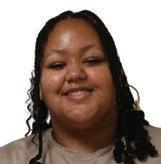
The hashtag #WomenInMaleFields is a necessary step towards equality for women in the workforce.
The trending hashtag #WomenInMaleFields was made popular on both TikTok and Instagram in Nov. 2024. It’s a step in the right direction towards equality for women in the workforce.
This hashtag was made popular as influencers posted videos using that hashtag to either put a spotlight on gender discrimination in the workplace, the amount of women working in male-dominated fields or to highlight toxic behaviors that some men tend to display.
As defined by the woman-focused consulting company the Red Shoe Movement, “Male-dominated fields are those where most roles are held by men rather than women.” These barriers are shown by the U.S. Bureau of Labor Statistics, which reported that only 6.5% of women worked in male-dominated fields like finance, construction or engineering as 0f 2022.
The disparity shows the barriers to entry for women, as well as continued discrimination – a survey of 1,000 working women conducted by The Muse, a job website, in April 2024 revealed that 41% said they felt like they were discriminated against based on their gender during interviews alone – a sentiment echoed by Dr. Kimberly Grantham, a Principal Lecturer at the University of Georgia’s Terry College of Business.
“(Being a woman in business) was a hump. I had to overcome that hump so that I could lean into those who I knew who were in similar positions but at different schools, to say, ‘We aren’t in this alone. We can get through this hump together,’” Grantham, also a parent of multiple CCHS students, said.
The limited career opportunities for American women highlights a flaw in how employers – and the government – treat women breaking through barriers in their careers. Social media trends like #WomenInMaleFields can’t solve these deeply entrenched societal issues, but they can spark change.


Social Media Coordinator Liya Taylor and Digital Editor Lea D’Angelo debate the drawbacks and benefits of a potential TikTok ban.

BY
Imagine losing access to a platform where a high schooler in Athens can learn calculus tips from a math-wiz in Australia, or where a small business can flourish by reaching millions with a single creative post. With approximately two billion users, TikTok is not just another social media app.
It’s a lifeline of education, community and inspiration. However, concerns over TikTok’s data privacy practices and the parent company ByteDance’s relations to the Chinese government have led to public officials arguing it poses a national security risk.
The community and social aspect of TikTok is an essential benefit to high schoolers.
On Jan. 19, after months of debate in the United States Congress, the app was officially banned in the United States.
In an attempt to salvage the platform, President Donald J. Trump signed an executive order on Jan. 20 that suspended the ban for 75 days. This delay, which ends on April 5, allows time for potential negotiations, leaving TikTok’s future temporarily safe. However, the future of the app is still far from certain.
But this executive order doesn’t protect TikTok – far from it. In 75 days, if the app isn’t purchased from ByteDance, students across the nation will be stripped of a free, innovative educational tool that supplements and enhances classroom learning even on top of the app’s entertainment value.
Clarke Central High School junior Estera Pirra, who has used TikTok for more than five years, is one of many students who turns to the platform for educational content.
“You can look up anything about science, math (or) current issues. I go on (TikTok) and see stuff about something that’s going on right now that I hadn’t heard about before. You can learn about the world,” Pirra said.
Beyond education, the community and social aspect of TikTok is an essential benefit to high schoolers. Through interactive features such as comments, duets and shared trends, TikTok allows teens to connect with peers, engage in discussions and build communities around shared interests.
Banning TikTok outright is a drastic measure that disregards its immense value as a platform. So once these 75 days are up, rather than eliminating the app, efforts should focus on addressing the security issues to ensure that users can continue to benefit from the platform.
Tick tock, TikTok.



“There are inherent drives for social communication, self-expression (and) identity exploration during adolescence. Some social media platforms like (TikTok) can provide a tool for them to do that,” Dr. Charles Geier, a professor of Human Development and Family Science at the University of Georgia, said.




Imagine losing access to a platform where being pushed into “filter bubbles” of negativity is the norm, insomnia is cultivated and personal responsibilities seem to melt away.
Tragic, right?
TikTok was set to be banned in the United States due to concerns over the app’s data privacy and its connection to the Chinese government after former President Joe Biden signed a Jan. 19 law; however, an executive order issued by U.S. President Donald J. Trump means the ban is on hold.




TikTok’s community of creators, business owners and just everyday people is one of positivity and connection, where users can bond over shared experiences. However, it’s not the content that’s the problem; it’s the app and the threat it poses to both national and health security.

In a National Public Radio article published in Oct. 2024, it was revealed through previously redacted documents that the company knew how addictive its app could be.


BY LEA D’ANGELO
According to TikTok itself, it takes approximately 260 videos to become addicted. That’s roughly 35 minutes of scrolling to become addicted to the app.
According addicted.
The app knows it’s causing harm and isn’t doing anything about it.
Research with a slew memory increased Do “From your attention. nefarious refrain Science
Research from the company itself found that “compulsive usage correlates with a slew of negative mental health effects like loss of analytical skills, memory formation, contextual thinking, conversational depth, empathy and increased anxiety.”
Do these sound like harmless fun?
“From the alerts that come up to the relatively short videos, TikTok keeps your attention. I’m sure there’s engineering behind it. So, that feels a little nefarious when these companies are trying to make their product difficult to refrain from,” Dr. Charles Geier, professor of Human Development and Family Science at the University of Georgia, said. “It takes some autonomy away from people, particularly vulnerable populations like developing youth.”

But the danger doesn’t stop there.
Many U.S. lawmakers are worried about how ByteDance, TikTok’s parent company, could be pressured under a Chinese law dictating that all organizations under the Chinese government must assist in intelligence gathering if asked. The amount of data on American devices that the app has access to is alarming. What would happen if a foreign government were to get its hands on it?
But the parent company, all organizations access to its


Nothing good.
If ByteDance knows it’s causing harm and isn’t doing anything about it, why should the people who depend on it for business, for community, have to
If ByteDance should
Social around,
Social media isn’t going away anytime soon, but if TikTok is going to stick around, it needs to stop seeing its users as numbers and money, and more as people that deserve to be protected.
Securing the CCHS campus in all areas is of uttermost importance to protect the student body when proper, combative gun laws aren’t being created.

BY ISABELLA GRESHAM Viewpoints Editor
Five.
There are five official entrances to Clarke Central High School’s campus open to the public. Baxter Street, Milledge Avenue, Waddell Street.
Tucked between well-trod Athens sidewalks and busy commercial roads, CCHS’ urban location presents students opportunities to engage with the city at large.
At the same time, however, the campus’s accessibility can be a security concern.
According to the K-12 School Shooting Database, from 2017 to 2018, the number of school shootings doubled and has since increased exponentially in the United States, posing a danger to students and staff housed within school walls.
Nearby Apalachee High School – a far more secluded school than CCHS – suffered from a deadly shooting on Sept. 4, 2024. Just four months later, another student brought a gun onto the school’s campus. Both incidents prove the ever-pressing need to better secure school campuses and prompt the unsettling question: what is stopping this violence from happening at CCHS?
access points. Entrances off Baxter Street and Milledge Avenue allow open automotive access to campus, whie guard towers need to be manned at both Waddell Street and Baxter Street to enforce security measures.
The CCHS security team, consisting of four CCSD security officers, one school resource officer, one Athens Clarke County Police Department Officer and one privately-contracted security officer, is ill-equiped to monitor all of the school’s entrances when they need to be concerned about in-building safety, as well.
To amplify safety measures and further protect the students within the actual school, increasing the number of members on the CCHS security team is necessary. Furthermore, installing weapon detection systems at all building entrances is an unfortunate necessity, as it would help to eliminate people’s ability to bring weapons onto campus.
There are simply not enough measures in place to protect CCHS’ urban campus.
“In an urban school like Clarke Central, you have proximity to a lot more people, a lot more passersby, who may come on campus,” Apalachee college adviser Andy Dean, who experienced the shooting at Apalachee shooting after working at CCHS for five years, said. “Apalachee is more of a suburban school, and we’re located amongst the neighborhoods, so there is foot traffic, but it’s not commercial foot traffic.”
CCHS’ accessibility means that students maybe in unique peril, and safety measures to secure the school’s campus remain subpar.
For most of the 2024-25 school year, CCHS’ campus had multiple open
“Some schools have metal detectors at the entrances, which is a lot to deal with, as far as having extra security or teachers checking book bags, but it wouldn’t hurt to have metal detectors,” CCHS Security Officer Chris Hood said.
When proper federal legislation is not being taken in order to prevent students or intruders from bringing a weapon into a school building, the burden falls upon the Clarke County School District to ensure school safety.
To allow public school districts to make these necessary safety adjustments, Georgia Governor Brian Kemp proposed a bill on Jan. 13 allotting a one-time fund of over $21,000 to more than 2,000 public schools in Georgia. This bill would help cover the costs to add staff to the security team and install weapon detection systems at each entrance...if it weren’t a mere drop in the bucket of money required to hire or install surveillance equipment.
Acquiring some of Gov. Kemp’s funding would be a starting place, but additional measures must be taken by the CCSD to protect CCHS students, teachers and staff while national or state laws do not.
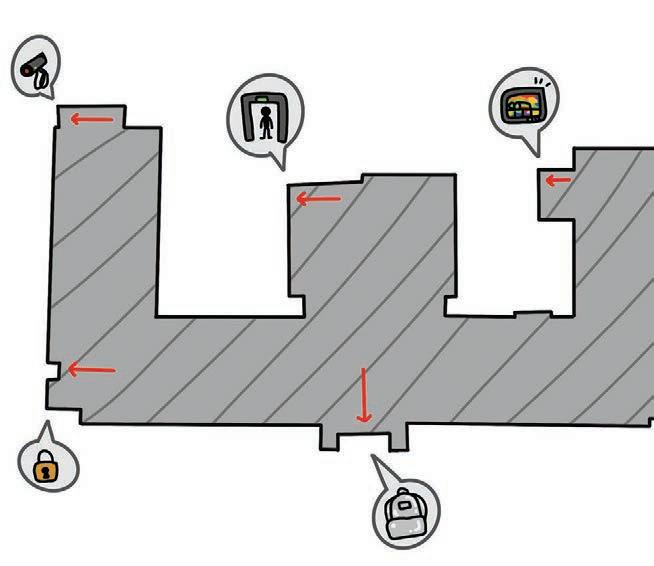

Featured: URBAN CAMPUS SAFETY: An overhead map of Clarke Central High School with potential safety measures is shown. CCHS’ urban campus has increased the possibility of dangerous threats. “When proper federal legislation is not being taken in order to prevent students or intruders from bringing a weapon into a school building, the burden falls upon the Clarke County School District to ensure school safety,” Viewpoints Editor Isabella Gresham wrote. Illustration by Sylvia Robinson
President Donald J.Trump’s push to abolish the United States Department of Education is a direct attack on public education and a danger to the CCSD community.
On April 12, 1965, Title I of the Elementary and Secondary Education Act was signed into law by President Lyndon B. Johnson.
The program, which was created in the wake of the Civil Rights Movement and funded by the United States Department of Education (DOE), addressed disparities in the public education system by funding public schools across the nation with a high percentage of students from low-income families.
Today, Title I continues to supply schools with federal money to hire additional staff, offer after-school programs and allow for smaller class sizes — benefits that extend to the Clarke Country School District, where all 21 schools have Title I programs.
But, after 60 years of working to close education gaps, President Donald J. Trump has made a dangerous vow that the Republican Party has been promoting since the 1980s: abolish the U.S. DOE.
higher education more expensive and out of reach for middle class families, take away special education services for students with disabilities, and gut student civil rights protections,” Becky Pringle, the president of the National Education Association, said in an NBC News news brief.
But this decision’s implications wouldn’t remain in the abstract – the CCSD would be caught in the crossfire and face immediate consequences.
According to the Grady Newsource, Clarke Central High School received $341,568 in Title I funding. Of this, $270,078 was used for teacher’s salaries, while the remaining was distributed among “instructional support, including supplies, professional learning, travel, and family engagement.”
This decision’s implications wouldn’t remain the abstract -the CCSD would be caught in the crossfire.
On Feb. 3, the Trump administration confirmed efforts were underway for an upcoming executive order that would dismantle the program. The vision: to remove federal regulation from public education.
“I believe strongly in school choice, but in addition to that I want the states to run schools,” Trump said at an Oval Office conference on Feb. 4.
What his irrational plan doesn’t take into account is the millions of dollars that would be stripped away from schools to supply these resources — in turn, robbing vital opportunities such as Title I from students.
“If it became a reality, Trump’s power grab would steal resources for our most vulnerable students, explode class sizes, cut job training programs, make
Programs at CCHS designed to support students that derive funding from Title I include, but are not limited to, after-school tutoring, summer school, Academic Support Specialists, counselors, full-time nurses and parent conferences.
These would be among the first to suffer.
Trump’s plan is a direct attack on addressing the systemic issues that have been rooted in the U.S. public education system since its founding. Eliminating federal aid to low-income schools isn’t “power to the states,” it’s power taken from the educational opportunities available to the students who need it most.
Unfortunately, we are those students.
If this administration cares about equality of opportunity, it will retain the DOE and Title I funding, lest CCHS and the CCSD suffer the consequences.

Featured: DOMINO EFFECT: The Department of Education is a key funder for the Clarke County School District through the Title program. However, United States President Donald Trump has already begun to dismantle the program. “What his irrational plan doesn’t take into account is the millions of dollars that would be stripped away from schools to supply these resources — in turn, robbing vital opportunities such as Title I from students.” Illustration by Sylvia Robinson



Featured: EYES ON THE PRIZE: Clarke Central High School senior Naani Simmons performs at the 2025 Black History Month Program in the E.B. Mell Auditorium on Feb. 19. Jaclyn Brown, BHM program coordinator and Career, Technical and Agricultural department co-chair, was proud of the event’s execution. “It takes a lot of heart to put something like this together, but it’s been amazing seeing how everything and all the people come together,” Brown said. “Everybody really enjoys the program every single year, so that’s really a blessing and it gives (us) the push and initiative to keep going.”
Photo by Grady Dunston
The deadly Apalachee High School shooting has cast a new spotlight on CCHS safety and security.
STORY BY LIZA LARSON News Editor
LAYOUT BY JANE RIPPS Managing Editor

Just more than four months after the Sept. 4, 2024 deadly mass shooting at Apalachee High School, students and staff had finally begun to return to “normal.” They were back in classrooms, resuming their usual routines and adapting to updated safety measures.
Fears then resurfaced when another firearm was brought on campus on Jan. 8 by an unidentified Apalachee student.
The reality of schools’ fragile campus security has compelled schools across the nation to reassess safety protocols and question their effectiveness now and in the future.
“Not a day goes by that I don’t think about something happening at school.





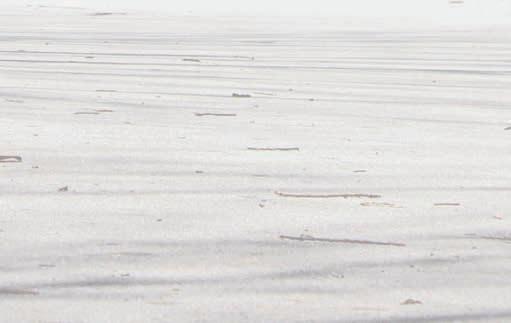
It’s infuriating,” fine arts department teacher Heather Garland said.
Clarke Central High School, like many schools, has a structured security plan in place. The school employs a combination of security personnel, technology and training to maintain a safe environment. All of these measures comprise the broader safety frameworks.
“School shootings have impacted the landscape. There’s more technology that’s being put in place. There’s more awareness,” Apalachee college adviser Andy Dean said.
As safety and security retain their vast importance to modern school environments, CCSD and CCHS administrators and staff provide a more complete picture the safety situation at CCHS.


Security officers operate on a rotating schedule, monitoring different floors and rotating into the camera room. CCHS currently has four security officers, or “grey shirts” and one full-time School Resource Officer. Under normal operations, the school would have two SRO’s, but one of those positions is currently vacant.
In addition to this personnel, CCSD has a partnership with the Athens-Clarke County Police Department whereby ACCPD officers are stationed across the district in each elementary, middle and high school. There is currently one
we get the job done.”
The number of security incidents and high-risk students remains low –CCHS does not have a documented instance of student trespassing reported by the CCSD Student Behavior and Attendance Dashboard in the 2024-25 school year (it had three in 2023-24), while the number of weapons infractions rests at two, which would be the lowest in a school year since the dashboard began reporting data in 2021-22.
Nonetheless, school administrators continue to emphasize the importance
“The goal is to ensure that there is at least one security personnel on every floor of the main building, so there’s multiple layers to the ensure that we’re safe here.”
-- Tamika henson, CCHS Associate Principal of Operations
ACCPD officer based part-time at CCHS. This partnership has been in place for over a decade and relies on a memo of understanding that lays out the terms of the agreement. CCHS also has one privately-contracted security officer who supplements the team.
At CCHS, this makes a total of eight security personnel responsible for 1,891 students, a 1:236 ratio.
“We have so many good kids that (the) kids that get in trouble or are having a bad day, it can average out to be a couple of students per security officer,” CCHS Security Officer Chris Hood said. “A couple more eyes wouldn’t hurt but
personnel have in school security.
“The goal is to ensure that there is at least one security personnel on every floor of the main building, so there’s multiple layers to ensure that we’re safe here,” CCHS Associate Principal of Operations Tamika Henson, who oversees building safety and security on the administrative team, said.
At a district level, staffing of personnel remains one of the most pressing security challenges.
“I think the No. 1 safety priority is getting a SRO for every school. We need more SRO’s,” CCSD Director of Safety and Energy Patrick Dyer said.

Beyond personnel, infrastructure plays a crucial role in school security. CCHS has at least 12 access points into the building, all of which are expected to remain locked, with access for visitors limited to the front office. Cameras provide surveillance in key areas, including the bus loop and gym entrances, which have been identified as locations where unauthorized individuals may attempt to enter campus.
“Doors being open can draw attention for someone trying to get into school, who can just run up to the door while it’s open. If everybody comes through the front office like (they’re) supposed to, then we can find out who’s coming in the building, who’s not coming in the building,” Hood said.
Doors are expected to be closed and locked at all times except between 7:45 a.m. and 8:45 a.m. when students enter the building and during several six-minute class changes throughout the day. However, the directive relies on students not opening doors for those trying to enter the building. This is where struggles have occurred – the topic was discussed extensively at a Sept. 5 meeting with students following the Apalachee shooting, while signs have been posted on entrances warning students of the disciplinary consequences of letting intruders into the building.
“In addition to funding, it requires changing our procedure, even changing how students come into the buildings.”
-- patrick dyer, CCSD Director of Safety and Energy
With these challenges in mind, CCHS continues to explore ways to enhance safety. Some institutions, like Apalachee, have introduced metal detectors at entrances.
“We got weapons detectors at Apalachee High School, which is a great measure that the school district has taken. We have those set up at all the entry points where students come into the building,” Dean said. “They’re two towers that stand six (or) seven feet tall. They are connected to a cellular network. They have various settings: (they) can detect a razor blade or a gun.”
As a mechanism to protect students, Henson believes pursuing similar technology might be worth the cost to implement.
“I’ve heard some conversations that some people may say, ‘They don’t work,’ or ‘If a person really wants to bring a weapon in, they’ll figure out a way to get it in.’ I can pretty much agree with that, (but) I think it will have a person think twice if that’s what they wanted to do and thinking twice is better than not having to think at all,” Henson said.
The district considered these options, but they too require funding CCSD does not have.
“Various companies offer AI enabled gun detection, but they require money. In addition to the funding, it requires changing our procedure, even changing how students come into the buildings,” Dyer said.



CCHS conducts regular safety drills to ensure students and staff are equipped to respond effectively in emergencies. These drills, which include lockdown, fire and severe weather simulations, are designed to reinforce protocols and minimize confusion during real incidents.
In addition to the internal safety measures, the Clarke County School District participates in the Site Threat Access and Response (STAR) audit, a comprehensive evaluation process designed to assess school protocols and identify vulnerabilities.
“Clarke County policy states that (there) are two required safety inspections per year at every school. We partner with Georgia Emergency Management and Homeland Security to do audits, (and) one of those is the STAR audit, Site Threat Access and Response,” Dyer said.
Due to budget constraints, only nine CCSD schools were chosen to conduct the audit, CCHS included. The selected schools ranged from elementary, middle and high schools on both the east and west sides of Athens in an effort to properly represent the district’s demographics. The schools were not notified ahead of time to best simulate an intruder.
“It’s hard in this building with about 2000 people, to know who should be here, (or) should not be here.”
Conducted by school safety authorities, the audit examines various aspects of campus security including surveillance, emergency response plans and staff training. The audit provides schools with data-driven recommendations to strengthen their safety procedures to adapt to emerging threats.
-- TAMIKA HENSON, CCHS Associate Principal
“(STAR auditors) come out in plain clothes and probe the building to see if they can get in, and they gauge the response of the staff once they enter the school. They’re trying to talk their way past our safety measures,” Dyer said.
After the audit, Dyer compiles all video footage and other relevant data to best understand each school’s response. Once this data has been collected, there are various postaudit meetings where constructive feedback is provided to each school on how they can better respond.
Another element of safety further revealed by the audit is the importance of identification of all staff and visitors. CCHS and CCSD employees all have issued badges, visitors are given a printed red sticker when checked-in, and all
contractors who are working on campus for more than 10 days are given a yellow badge.
“(The audit) brought up another layer of support that we have. Staff should be 100% always wearing an (ID) badge above the waist. We’ve had safety trainings (where it’s) reiterated (to) look for a badge. That’s how we should know who’s on our campus and we’ve all been told to approach them to ensure that we know who’s in our building,” Henson said.
“We’re relying heavily on see something, say something in the community.”
-- terry reid, CCSD Chief of Police
Despite these directives, protocols, personnel, audits and other safety measures, understanding and ensuring that the CCHS campus is secure is not an easy task.
“It’s hard in this building, with about 2000 people, to know who should be here, (or) should not be here. So that was the thing that the district did, put the badges in place so that way we’ll have a greater chance of knowing,” Henson said.
In addition to these identification measures, CCHS utilizes CENTEGIX, a crisis alert system designed to improve emergency response times and communication. This technology is integrated into school safety protocols, working alongside the other measures to create a comprehensive security framework. CENTEGIX has been implemented since 2019 but was not fully integrated into all CCSD schools until after the COVID-19 pandemic.
CENTEGIX provides staff with wearable badges equipped with an emergency alert function. In the event of an emergency, whether it be medical, a fight, or an active threat, staff members can utilize their badge to instantly alert the school security team and administrators. Unlike traditional intercom systems, which may not always be available in emergency situations, CENTEGIX allows for silent communication to better enhance overall campus security.
“I’m sure you’ve probably seen on the television the Life Alert panic alert buttons, it’s very similar to that, so with the button depending on how many times a staff member presses it, there’s differences that can be activated from the badge,” Dyer said.
When pressed two times, a StaffAlert is issued. In the event of a StaffAlert, the school is put into a soft lockdown. During soft lockdowns all regular activities can continue aside from leaving classrooms. StaffAlerts are most commonly used for smaller issues like medical emergencies or fights.
When pressed three times, a Campus-Wide Alert is issued. In this event, the school is put into a hard lockdown where all classrooms are secured and students and staff seek cover from a potential intruder.


Through all of these staff and systems, safety within the district comes down to the connectedness of the framework overall. Bridging each piece to ensure that there are no gaps relies on each student and teacher in each building.
“We rely heavily on see something, say something in the community. The staff and the students have done great by reporting those incidents, and we’ve been very successful with that approach,” CCSD Chief of Police Terry Reid said.
This community-reliant approach has been successful over the years, but the CCSD is still looking to expand safety measures to fully ensure campus security, an expansion reliant on funding.
“I wouldn’t call it a shortcoming so much as we’re trying to catch up, and we’re waiting on funding for the state to help,” Dyer said.
From a teaching perspective, Garland wants to see more proactive measures taken. For her, measures seemed more punitive than prevention-oriented.
“We need to think more about how to solve the problem on the front end, rather than the back end,” Garland said.
Garland is not alone in the thought. Security administrators like Reid are advocating for safety to become more integrated into CCSD curriculum in the hopes it would raise awareness of security policies and procedures themselves.

“There needs to be some education, (it) should be a part of the curriculum somewhere,” Reid said. “If the students knew, if they had some understanding of the law and how easy it is to violate it, they’ll be careful.”
In the meantime, however, safety remains an ever-changing, turbulent landscape at CCHS, leaving students like junior Cortni Veasley with little understanding of what positive safety practices look like.
“In my opinion, there is some confusion or misinformation about safety measures at CCHS, especially because the protocols are not consistently communicated to students,” Veasley said. “I feel like majority of CCHS students don’t fully understand.”O

Clarke Middle School is installing solar panels to provide clean energy and educational opportunities for students as it continues its renovations.
STORY BY MZÉE PAVLIĆ News Staffer
LAYOUT BY WYATT MEYER Editor-in-Chief
Clarke Middle School parents, teachers and students have pushed for the installation of four swiveling solar panels to generate power for the building as a part of the second phase of Clarke Middle School’s renovations.
The CMS Science, Energy and Adventure Team, led by CMS gifted collaborator and math teacher Audrey Hughes, advocated for the use of solar energy to the CCSD Board of Education in the fall of 2023. Their efforts proved successful over a year later as the panels were approved for installation on Dec. 12, 2024.
“I think one of the key components is that before the students made their presentations to the Board, we did our homework, we studied, we researched, we got articles. They found examples of school districts around the nation that had experienced success with trying something like this, and so they went in with those examples,” Hughes said. “You go in with accurate data, and you present your findings, and you don’t sugarcoat it, you tell it like it is.”

learning, and more engaged in science and math in particular, as well as seeing that this can be done,” Hughes said. “This is exciting, and it gives them a taste of potential STEM careers that they could go into the energy field, jobs are booming just because of demand.”
The CMS Science Energy and Adventure team is a part of the National Energy Education Development or Need Project. As a part of this team, students learn about conversation and how energy is used and obtained.
“It’s rewarding to work with young people who can see outside the box, who can see a future.”
--Audrey Hughes, CMS gifted collaborator and math teacher
The panels will rest on pedestals around the CMS campus. Although the pedestals have been built, the solar panels have not yet arrived at CMS as of March 25. However, when the panels do arrive, their positive effects will not be limited to just producing power.
“I’m hoping that our school becomes a real learning lab where kids are
“Working with (high school age students) and middle school kids is really exciting. I know it’s not everybody’s cup of tea, but I like it, because you all see the world differently. You see hope and possibility, even, even when you’re told no sometimes, (and) that’s exciting,” Hughes said. “It’s rewarding to work with young people who can see outside the box, that can see a future, and then can figure out ways to make it happen.”
Although four sets of panels will not be enough to power the building, they will lessen electricity costs and bring a more modern approach to clean energy in CCSD schools.
“If we can produce electricity with nothing more than sunlight, even if (the panels potentially) save us 5% of our power bill, (it’s important)l. Over time, the panels would essentially pay for themselves,” CMS Principal Derrick Maxwell said. “Hopefully (this) serves as a model to where it can be upscaled and replicated across the district.”

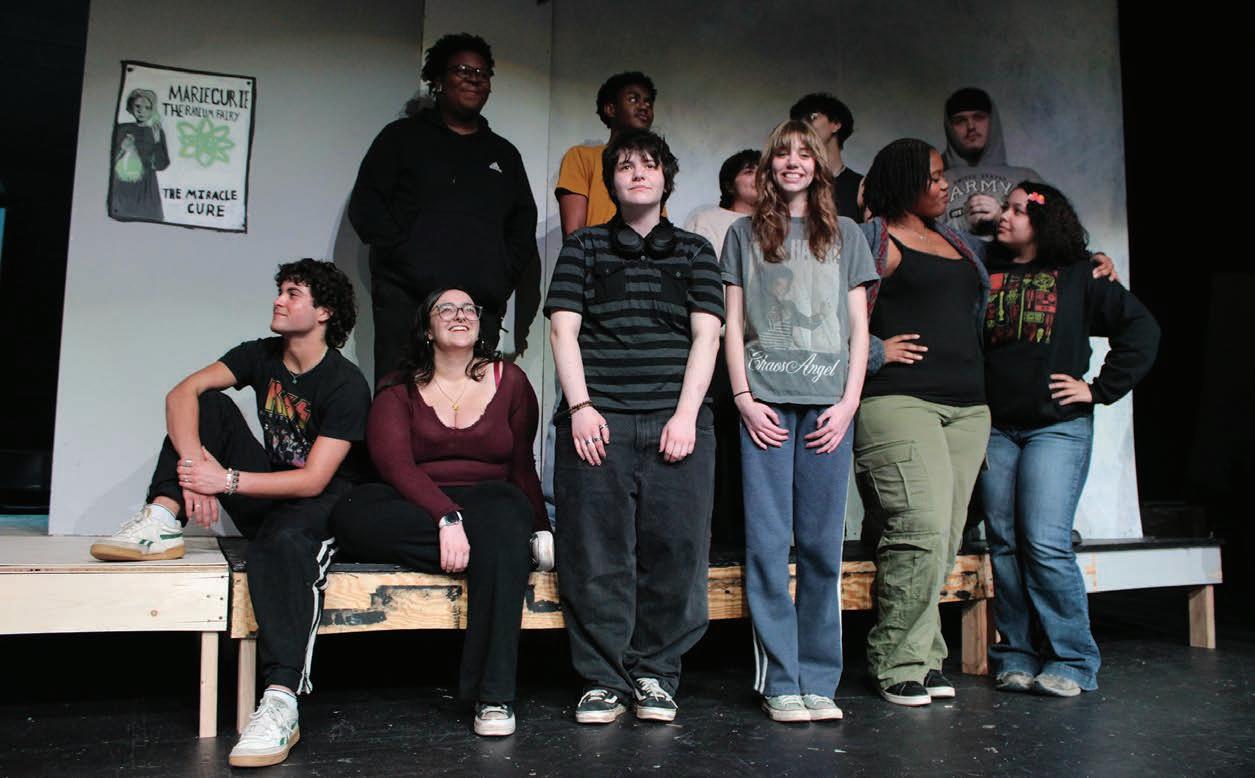
The CCHS and Cedar Shoals High School drama programs are joining for the third time to bring their production of “Mamma Mia!” to the CCHS E.B. Mell Auditorium in April.
STORY BY EMLYN MCKINNEY News Staffer
LAYOUT BY ISABELLA GRESHAM Viewpoints Editor
Buses load up with students heading to their “rival” school.
The tapping of hammers sounds through the Clarke Central High School E.B. Mell Auditorium as set designers work side-by-side, learning each other’s names.
Actors from different drama programs gather on the same stage for the first time in 11 years.
The CCHS and Cedar Shoals High School drama programs are preparing to perform the hit musical, “Mamma Mia!”, from April 17-20.
arts department teacher Kayla Griffin and CSHS fine arts department teacher Rosemary Milsap — , sensing initial uncertainty from their students about sharing a space, their programs have since embraced the collaboration.
“We should be finding multiple ways to create a sense of friendship (and) goodwill between the students at the two schools.”
This joint production was first announced to the CCHS drama program at a drama banquet on May 11, 2024. Despite both co-directors — CCHS fine
--ROSEMARY MILSAP, CSHS fine arts department teacher
“It creates a whole different culture, dynamic and feeling when you’re not your little home group anymore. You’re part of this bigger community,” Milsap said. “I knew, ultimately, that my students would expand and grow from that experience.”
“Mamma Mia!” will be the third CCHS and CSHS collaboration after “Chicago” in 2005 and “Les Misérables” in 2014. For Milsap, who has co-directed every joint performance, the rivalry between the schools is part of why she enjoys them.
“I don’t think it serves our students to create (the) fake rivalry that exists between the schools. The adults very
much promote that rivalry, and it does more harm than good,” Milsap said. “We should be finding multiple ways to create a sense of friendship (and) goodwill between the students at the two schools.”
As the collaborations only happen around every 10 years, the current drama program members haven’t had many chances to work side-by-side and learn about each other. This is something co-lead Nate St. Onge, the CCHS junior who will play love interest Sky Ramand, has observed.
“I’ve interacted (with CSHS), because I’ve seen some of their shows (and) I have some friends there, but (I’m) not there everyday,” St. Onge said. “(I’m looking forward) to getting to know the Cedar kids a little bit better.”
Previous collaborations were also created as a way for the drama programs to support each other, which is the case for “Mamma Mia!” CSHS’ Larry G. McLure Fine Arts Building is undergoing renovations, meaning that the production is rehearsed largely at CCHS. The arrangement allows the CSHS drama department to still put on a production, despite all four performances of “Mamma Mia!” being held in the E.B. Mell Auditorium.
That spirit of crosstown unity is how the first collaborative production was put on – in 2005, the joint production allowed Milsap to sponsor a spring play after the birth of her son.
“Everybody here is so talented, (and) it’s really incredible to see all the talent come together in (Athens-Clarke) County.”
--
CSHS sophomore
“It’s two schools instead of one, so we’re trying to find a balance of making sure everything feels fair (and) that we equally spend our time between (CCHS) and (CSHS) to make sure that everyone feels comfortable,” Griffin said.
Despite some technical difficulties with transportation between schools and scripts and set design plans delivered on time, CSHS sophomore Ava Massey, who will play co-lead Sophie Sheridan, has enjoyed rehearsing on a stage again with other student actors.
“(Collaborating has) been so much fun. Everybody’s been so nice and welcoming already,” Massey said. “Everybody here is so talented, (and) it’s really incredible to see all the talent come together in (Athens-Clarke) County.”
People outside of the drama programs have also seen the benefits of a collaboration between rival schools, including CCHS Associate Principal Dr. Summer Smith, who believes CCHS and CSHS will thrive because of the performances.
“I love that we’re doing this to bring both schools together. If both schools are succeeding, then Clarke County as a whole is succeeding,” Smith said. “It is fun to have (a) counter school, but I really want both schools to excel and do their best.”
During rehearsals, Milsap has observed the CCHS and CSHS drama programs’ growth and skill, and wants more people outside of the programs to recognize the talent within ACC.
“We have students who are able to give time, work really hard, put themselves out of their comfort zone, gain skills, put (those skills) up in front of people and give it their all,” Milsap said. “I think the community at large isn’t particularly aware that (the drama programs) are capable of doing things that are worth people coming to see, so the big thing is: come see the show. Come see what our kids can do.”

DREAM COME TRUE: Cedar Shoals High School sophomore Ava Massey reads the script for “Mamma Mia!” in the Clarke Central High School E.B. Mell Auditorium on Feb. 12. Massey was excited to play her dream role in the performances: main character Sophie Sheridan. “It sounds like a lot of people are gonna come to see (the performances) and even seeing the posters in the hallway, I got so excited,” Massey said. “This is really a dream for me to be able to perform (‘Mamma Mia!’) for so many people.”

Above: THE SHOW MUST GO ON: The “Mamma Mia!” cast members look through the musical’s script in the Clarke Central High School E.B. Mell Auditorium on Feb. 12. The first drama collaboration between CCHS and Cedar Shoals High School was partially created to help CSHS co-director and drama department teacher Rosemary Milsap put a spring play together after her son’s birth. “My son was born right after our fall play, and I knew I wasn’t going to be able to give (the spring play) the kind of focus that a large play requires,” Milsap said. “(Former CCHS drama department teacher Harriet Anderson) really generously said, ‘We can do this together, and I can pick up where you’re not able to do everything.’” Photo by Grady Dunston


Featured: RUNNIN’ DOWN A
A competitor in the Clarke County School District Special Olympics sprints down the track in Billy Henderson Stadium on March 20. Clarke Central High School and Cedar Shoals High School JROTC students facilitated the Special Olympics for elementary, middle and high school special education students to participate in. “(The Special Olympics) was very enjoyable. I like seeing the smiles on the kids’ faces,” CCHS sophomore Khalid Ebrahim, a volunteer, said. “I know I’m gonna do this next year and the year after because I just love the vibe around here, seeing all these kids happy, seeing them having fun, it’s just so amazing.”


Photo by Grady Dunston
“Anne Frank: A History For Today” Exhibit in the CCHS Media Center on March 20. For CCHS junior Sadie Miller, the exhibit demonstrated what Frank wanted for future generations. “Educating so many people about Anne Frank and her life was great. loved teaching, and I think it’s great that youth have the opportunity to teach other people,” Miller said. “That’s what Anne Frank wanted: the opportunity for youth to educate other youth. think it was an amazing success.”
Featured: UNDERSTANDING THE PAST: Clarke Central High School hosts the 2025

BY ADAH HAMMAN Variety Editor
When season one of the Netflix original series “Monster: The Jeffrey Dahmer Story,” which centered around American serial killer Jeffrey Dahmer, was released on Sept. 21, 2022, it became an immediate commercial success.
It quickly became the platform’s second mostwatched English-language series of all time and received nods from both the Golden Globes and the Emmy Awards. Viewers couldn’t help but tune in, hoping to find answers as to what made Dahmer who he was. Was it his family? His school life?
However, something many audience members didn’t consider while watching was the victim. Or, in Dahmer’s case, victims.
Of which there were many.
Between the years of 1978 and 1991, Dahmer murdered 17 people, 11 of which were men of color — a fact that many contribute to why it took so long for Dahmer to be arrested. Instead of dedicating time to these victims and their lives, though, “Monster: The Jeffrey Dahmer Story,” glamorizes the gory details of their murder.
and Lyle Menendez, reached the No. 1 spot on Netflix within the first week of its release, despite being “riddled with mistruths,” according to members of the Menendez family.
This, unfortunately, seems to have become a trend in the world of true crime content. Whether it’s YouTube videos, podcasts or documentaries, consumers of true crime have become desensitized to its graphic nature and are prone to overlook the impact on the people involved.
One reason is that the depiction of crime in media has evolved over the past few decades, which has changed the way audiences view criminal activity — from misdemeanors to felonies.
Consuming true crime content doesn’t have to be immoral.
“When (film used to) depict criminals, there would have to be some sort of punishment for it. So, society had that moralistic sort of look at it, (the) ‘crime didn’t pay’ sort of idea. That has evolved, though,” Clarke Central High School U.S. History and Film teacher Drew Wheeler said. “Our relationship to a depiction of (crime) has become more explicit. There’s glorification (of) some things.”
Due to this shift, viewers have become desensitized to the graphic details present in a lot of true crime content, leading them to treat the cases more as entertainment rather than horrific events that have changed the trajectory of peoples’ lives.
Upon the season’s release, several victims’ family members claimed in reports from The Guardian and The New York Times that they weren’t made aware of the show and hadn’t consented to its production. Some even went on to say that it retraumatized them. Nonetheless, viewers were undeterred by this egregious violation of privacy, and the show continued to grow in popularity.
Season one of “Monster” isn’t the only culprit, though. “Monsters: The Lyle and Erik Menendez Story”, which was based on alleged California killers Erik

Consuming true crime content doesn’t have to be immoral, though. There are several examples of cases being handled with sensitivity and respect for the people who have been affected. For example, YouTube personality Kendall Rae, who makes videos across various platforms, invites members of the victim’s family to share their experience and donates all proceeds to charity.
To prevent further harm to victims’ families, audiences should seek content that centers their voices and avoids sensationalizing the crimes themselves.


After trying gyros at several restaurants around Athens, ODYSSEY staffers determined that downtown favorite Gyro Wrap offers the peak Greek meal.
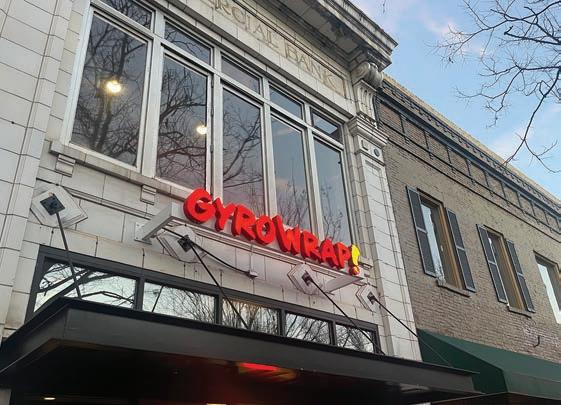





BY ADAH HAMMAN Variety Editor
Gyro Wrap, located at 114 College Ave., is a Mediterranean restaurant that offers a variety of wraps, which are characterized by soft pita bread, strips of lamb and tangy tzatziki sauce.
When customers step through the door, they will notice that, while the space is relatively small, it has a homey feel to it. The employees are quick to greet you with a smile, and the smell of seared meat wafts through the air.
Their signature menu item, the gyro wrap, contains lamb, red onions, lettuce, tomato and tzatziki sauce, all on a grilled piece of pita. The lettuce is very crunchy and although there is a lot of tzatziki sauce, it’s not overpowering. Additionally, for the price of only $9.49, the portion size is considerable and should satisfy a customer’s appetite.
However, one potential downside is the restaurant’s location. Seeing as it’s over a mile away from Clarke Central High School, students who don’t own a car might be deterred from dining there. Parking Downtown also requires payment, so potential customers who are looking to save some money might choose to enjoy a meal elsewhere.
Despite this issue, Gyro Wrap is still an affordable and delicious option if one is looking for some home-style Mediterranean food.
























8.7
7 9 6 9 9 8.1/10

BY PETER ATCHLEY Diversity and Representation Editor
Settled in the center of Five Points is a local favorite, the Mediterranean Grill, which is an authentic and delicious haven for those looking for a good meal, open from 11 a.m. to 9 p.m. daily.
Located at 1591 S. Lumpkin St., the space is warm and inviting with large windows that let in lots of sunlight, an environment that is reflected in their food. Another addition to the dining experience is the large sitting area towards the back of the restaurant.
At $10 a sandwich, the dish is pretty affordable, although for people who need to eat on the go, it may not be the best choice. The sandwich is covered in sauces like tzatziki that add to the flavor, but unfortunately, makes it hard to eat without getting sauce all over the customer.
The entrée comes with several sauces like tzatziki and tahini that make for excellent add-ons at no extra charge. The sandwich itself tastes delicious and is full of flavor, but the pita it comes in is rather stale. The staff are warm and friendly to their customers, making it a priority to get food out quickly so wait times are very short.
Mediterranean Grill is a great visit for those looking for a solid sitdown meal and a good dining experience, as long as one has napkins.
























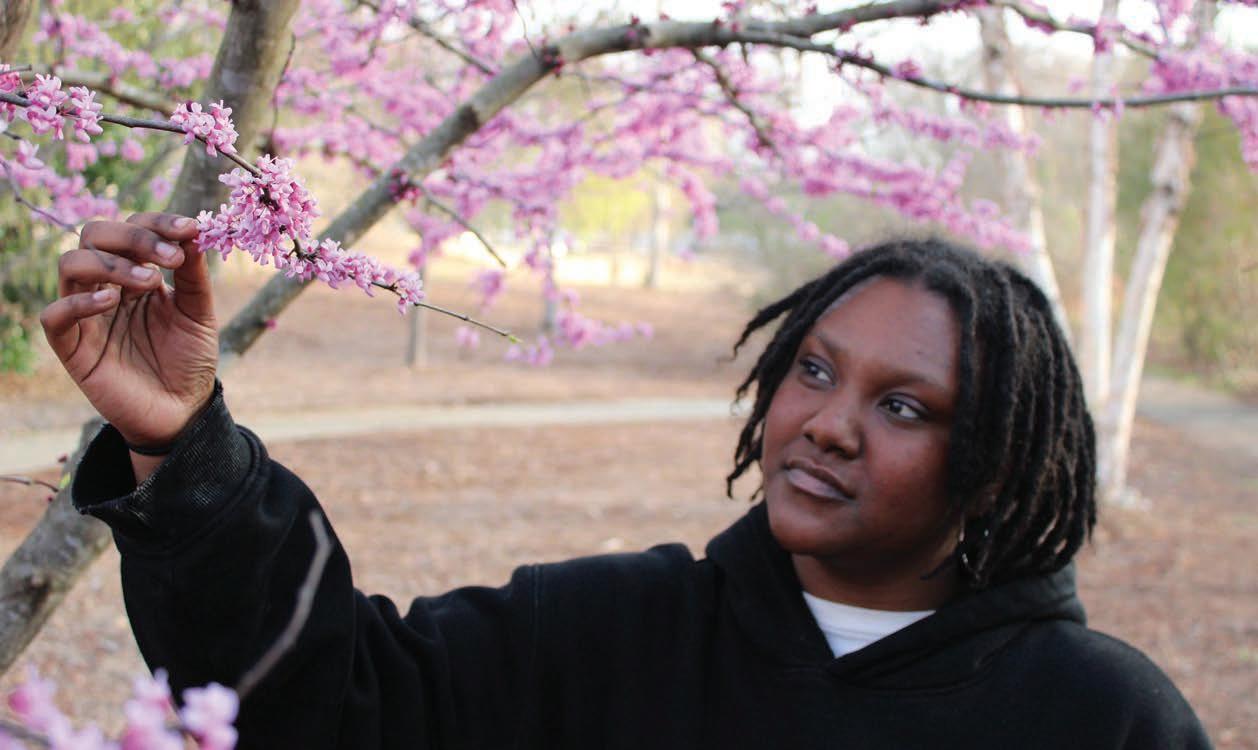
The Athens Land Trust, a nonprofit dedicated to conservation and creating housing opportunities, has served ACC residents for over 20 years.
When then-39-year-old Nancy Stangle’s car broke down in the Atlanta suburbs during the spring of 1994, she had no idea that it would drastically alter the course of her life.
Editor
Stangle, an Athens-Clarke County resident and aspiring real estate developer, had been on her way to a family friend’s house after spending the day at Zoo Atlanta with her family. Following the incident, however, her plan for a relaxing evening was thrown out the window and her career aspirations realized.
“This woman came out of her house where (the car) broke down, and she offered to let me use her phone to call a tow truck. While we were waiting, she was telling me (about how) she was (recently) able to buy this house in Atlanta, and (that) she was proud of that,” Stangle said. “(I remember) she said, ‘I never would have been able to own a house in Atlanta if it weren’t for (Cabbagetown Revitalization and Future Trust (CRAFT)).’”
This remark stuck out to Stangle, who had been searching for a way to build a community in Athens where members could maintain a sustainable and affordable lifestyle. Just a few months prior, she had helped purchase 132 acres of land on Tallassee Road, hoping to develop it and turn it into residential property. In order to do this, though, she would need an easement, or the right
to occupy and use the land, which she had not been able to obtain.
Until she learned about CRAFT.
“We didn’t want to start a nonprofit. We were just trying to do our neighborhood development, but what I realized was that we were looking at a piece of land (and) trying to figure out how to do all these things (when) that’s what happens in a community (land trust),” Stangle said.
So, later that year, Stangle and her colleague Skipper Stipemaas founded the Athens Land Trust (ALT), an organization dedicated to preserving green spaces
“We didn’t want to start a nonprofit. We were just trying to do our neighborhood development.”
-- Nancy stangle, Athens Land Trust Co-founder and Treasurer
and providing affordable housing opportunities to impoverished ACC residents.
Former ALT Executive Director Heather Benham was working at a homeless shelter in the early 2000s when she learned about the nonprofit through her graduate program at the University of Georgia. After serving as an intern for a year, she was hired as the ALT’s first full-time staff member.
“(Families living in the shelter) didn’t have a car, so they depended on the bus. They needed to live somewhere on the bus line, and they couldn’t find a place that was on the bus line to get to their jobs. So, it made me start thinking about housing,” Benham said.
The organization began to propose various initiatives in the first 20 years. For example, in 2013, the group acquired Williams Farm, a five-acre plot of land a mile from Downtown Athens. Additionally, the ALT began several projects along West Broad St, including creating a community garden.
“In (the West Broad neighborhood), there are (around) 30 single-family homes that we were able to either build or renovate and sell to first-time home buyers,” Benham said. “(There were) another 50 homes there (that) were already owner-occupied (and) we were able to make repairs on (them), so people could stay in their homes.”
The ALT also began to offer Housing and Financial Counseling Services in
I grew up with a forest in my backyard and have always loved nature. Preserving that nature is really close to my heart.”
-- Karl Weinmeister, Young Conservation Steward and CCHS senior
2004, which provide ACC residents with financial consultation.
“So many families are just one illness or one car wreck away from being homeless, (or) being in poverty, and so (many) times people that wanted to buy our houses had some credit issues and it takes a while to repair those. We knew that we needed to offer those (counseling) services,” Stangle said.
In 2013, the ALT started its first youth development program, the Young Urban Farmers (YUF), and eventually formed two more. Strategic Partnerships Director Emmanuel Stone has worked with the coordinators of both the YUF and the Young Conservation Stewards (YCS) programs for several years and has seen the impact they have on younger generations.
“Even if (participants) don’t go directly into the field (they’re working in), all of them are taking experiences or things that they learned with them (later) in their life,” Stone said.
Today, Stone helps coordinate outreach efforts with the Clarke County School District to encourage students to participate in the ALT’s youth programs. YCS member Karl Weinmeister, a Clarke Central High School senior, joined the program in the summer of 2024 after interacting with the organization’s booth at CCHS’ annual career fair.
“A lot of the time, we focus on removing invasive plants from a public area or trail. We also (go to) volunteer (or) community events that are related to conservation,” Weinmeister said. “I grew up with a forest in my backyard and have always loved nature. Preserving that nature is really close to my heart.”
Stangle, who has seen the organization grow and evolve over the past 20 years, hopes that it will continue to serve people in and around the Athens community.
“(The ALT) has been good for the environment (and) for the Athens community,” Stangle said. “It has slowed down gentrification (and) kept some of the historic homes in the neighborhoods that would (have been destroyed). It’s created generational wealth. (The) construction that we’ve done has brought jobs and money (to) people.”
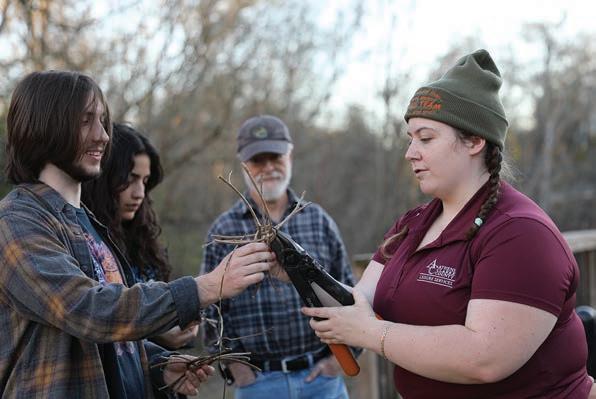












a night of Black creative expression.
ESTORY, PHOTOS AND LAYOUT BY WYATT MEYER Editor-in-Chief
mblazoned on the back of Athens rapper Montu Miller’s deep purple blazer are four symbolic words: “We are hip hop.” The simple sentence is a message about Black History, Black Excellence and Black Creativity –the ownership of cultural expression.
On Feb. 8 at Ciné’s Lab event space, the “We” was in full effect.
No less than a dozen Black performers –encompassing DJs, poets, rappers, singers, artists and dancers from all around the South – turned out for Miller’s production, “Hip-Hop Canvas: Beats, Art & Fashion” on a night of creative celebration.
“You have to bring all these artists that are living life in different ways, and bringing them together is not easy, but we did,” Miller said. “The essence of Black Excellence is on display right now.”
The event, which opened its doors at 9 p.m., began with performances from DJ ChiefRocka and a League of Step dance team. Afterwards, hip hop artists and rappers like Stella Groove, It’s Izu, LB and more took the stage. At the back of the venue, artist Broderick Flanagan painted live for the audience to see.


Every lilting riff, every swirling brushstroke, every four-bar verse was a reminder: Black creativity exists in Athens.
For veteran performer Eddreck Hayes, stage name Sho, the theme of the night was inspiration.
“My (performance’s) message was that in all walks of life, Black is an essence that reaches almost every part of the universe,” Hayes said. “Some music is a little more smooth, some music is a little bit more rough around the edges, but it’s all about being able to relate to it.”
Tucked away in a nondescript yet iconic part of Athens, Black culture was celebrated. Every lilting riff, every swirling brushstroke, every four-bar verse was a reminder: Black creativity exists in Athens, and it does so proudly.
“I just feel out of body and (in) giving voice to the people that came before me, the people that I wanted to honor and illuminate,” Athens Poet Laureate Mikhayla Robinson Smith said. “It feels great to be a vessel for the stories of my people.”


Stella Collins,known for her stage name ‘Stella Groove,’ is a singersongwriter out of Athens. Collins has released multiple albums throughout a 10-year musical career, focusing on the intersection between harmony and raw emotions.She performed three of her original songs and one song by Michael Jackson, highlighting acceptance and strength as themes for the modern-day Black experience.
Mikhayla Robinson Smith isAthens’ Poet Laureate – the first Black female Poet Laureate in the town – and a University of Georgia alumna. She most often performs spoken word,but also writes essays and longform pieces. At the Hip Hop Canvas event,Smith performed three poems called “The Gospel is Filled with Black Love,”“Witness My Blackest Girl with a Capital B”and “The Day Hip Pop was Born.”
“
It's important to be in community and support other people. It's important for all of us to see what we can do, and to highlight the people who have done their art in Athens, in this community.
" “ "
I wanted them to see just the different elements of Black history in music. That's why I did something that was from the times of slavery all the way up to the current (day), incorporating (history) my music. It was kind of like a timeline of how the culture of music changed.



Eddreck Hayes, professionally known as ‘SHO,’ is a rapper “born and bred” in Athens. Hayes takes inspiration from iconic rappers Tupac Shakur and the Outlawz,beginning an eight-year career hoping to carve his path into the mainstream music industry. At the Hip Hop Canvas, SHO performed five original songs from his catalogue.
I wanted people to see that you can be inspirational to people, but also be unique to yourself. Coming from the position that I (was in), I kind of grew up a little bit rougher than some individuals, but it made me an individual who was able to express myself as an artist From my visions alone.
Brittany Sanders,also known as ‘L.B.,’ is a hip hop artist born in Tampa Bay, Florida, but more prominent for hip hop performances in Athens and Atlanta. With a similar style to artists like Missy Elliot,Sanders’s dancing background gives her the feel of a showwoman, in every sense of the word. At Ciné,Sanders performed several songs from her catalogue,creating a dance circle on her final performance.

with how things are in the world, just bringing people together (is important). For me, it really doesn't matter about the race, because there’s different races (here), but (I want to) to keep the culture together where we're not fighting each other. Society shows (what) the culture does.


Angel Reese, a forward for the Women’s National Basketball Association’s Chicago Sky, released her “Angel Reese Special” in collaboration with McDonald’s on Feb. 10, bringing a disconcerting flavor to a timeless classic.
Price is determined by restaurant, and is varied by location, but is $7.29 at the Athens Epps Bridge Location. The meal includes a Quarter Pounder with bacon and McDonald’s new Barbeque sauce, a side of french fries and a Hi-C Orange Lavaburst.
The first bite of the burger comes as a shock, as the BBQ sauce is overwhelmingly sweet and tangy, and does not pair well with the burger. However, the bacon adds a nice smoky flavor and crunch similar to a regular Quarter Pounder, but definitely sweeter. The citrusy Hi-C helps refresh customers between bites, however, the powerful citrus taste can be overpowering. McDonald’s classic thin and salty fries elevate the meal.
Customers who enjoy a tangy BBQ taste may like their burger, but overall, it’s still not a slam dunk.
Kye Streetman, Journalism I student

“Captain America: Brave New World” -- a Marvel Studios Film -- premiered in theaters on Feb. 14. Directed by Julius Onah and rated PG-13, the movie promised fans an action-packed film but delivered a confusing mashup of characters to add to the Marvel Cinematic Universe.
The story follows Sam Wilson (Anthony Mackie), who is grappling with his new role as Captain America following the retirement of Steve Rogers. He works alongside the President of the United States Thaddeus Ross (Harrison Ford), when he is faced with the villain Dr. Samuel Sterns (Tim Blake Nelson) who threatens to destroy Ross’s reputation.
Although the film does have suspense and plenty of action, the plot becomes predictable and less exciting as it progresses, leaving viewers bored during the rest of the film. The beginning featured action and intrigue, but the rest of the film was wordy and made up of lengthy conversations.
While it might be a fun watch for devoted fans, overall the film wasn’t anything new and felt like a poor addition to the MCU.
-- Lucca Fleenor, Journalism I student
BY ADAH HAMMAN Variety Editor
Is anyone there? “First Time Caller” is American author B.K. Borison’s fifth book and was released on Feb. 11. The novel is categorized as a contemporary romance, and while it does have its moments, it ultimately falls short of expectations.
“First Time Caller” is written through dual perspectives and follows Lucie Stone, a mechanic, and Aiden Valen, a radio host on Baltimore’s romance hotline. The two first interact after Maya, Lucie’s 12-year-old daughter, calls into the show and asks for dating advice, not for herself, but for her mom.
Aiden, who has essentially given up on romance (the irony is not lost on him), offers to help Lucie find her fairytale ending by inviting her to the show as a guest. When things begin to heat up between the pair, though, Lucie wonders if her happily ever after might just be sitting in the sound booth next to her.
Ultimately, the problem readers may have with this book isn’t in the initial set-up or the characters. Lucie and Aiden are relatively well-developed, and most aspects of their relationship feel authentic. The side characters are fun, albeit forgettable. The world Borison has created feels real, and the way the characters interact with it is enjoyable.
The problem lies in the pacing. The relationship between Lucie and Aiden feels rushed because, instead of Borison devoting time to building their relationship, readers are forced to sit through inconsequential scenes where Lucie talks to her coworkers or has dinner with Maya’s dad. Granted, these scenes do make Lucie’s character more realistic, but at least one of them could’ve been scrapped if readers are to expect that she and Aiden are madly in love at the end of the book, which takes course over the span of just three weeks.
All in all, “First Time Caller” is an enjoyable read but may drag on too long for some readers.

The sci/fi horror film “Companion” premiered in theaters on Jan. 31. Directed by American writer and director Drew Hancock, the movie intrigues viewers with its fast-paced plot and leaves viewers satisfied by the end.
The movie follows Josh (Jack Quaid) and his robot companion, Iris (Sophie Thatcher). While the pair are on a weekend getaway to a remote cabin owned by rich businessman Sergey (Rupert Friend), things take a turn for the worse.
Through the creation of “Companion,” Hancock took a typical artificial intelligence film and put a unique spin on it, allowing for differentiation in the sci-fi genre. With an interesting and distinctive composition of shots and usage of location, the movie is easy and exciting to follow.
Additionally, with many fight scenes and twists and turns, the movie’s pacing speeds up quickly, keeping viewers on their toes. However, it leads to a very rushed, though relatively satisfying, ending.
Overall, “Companion” is a digestible, fast-paced and unique film that horror and sci-fi genre lovers should enjoy watching.
-- Isabella Gresham, Viewpoints Editor


Netflix’s latest original romantic comedy, “Kinda Pregnant,” was released on Feb. 5. The film follows schoolteacher Lainy Newton (Amy Schumer) as she dons a fake belly to resemble her pregnant best friend Katie (Jillian Bell). From there, a multitude of hijinks ensue.
The film attempts to justify Lainy’s actions by describing how Lainy lost her child during pregnancy, trying to paint her as some kind of desperate, tragic character that viewers are supposed to root for.
However, the audience may find it hard to believe that a presumably sane person would go to this extent just to feel pregnant.
The humor is crude and cringy, and the characters are like caricatures with almost no character development or depth.
Overall, “Kinda Pregnant” feels like just another forgettable comedy, leaving viewers with nothing except disappointment.
-- Sam Harwell, Sports Staffer

On Feb. 10, McDonald’s brought back their seasonal Shamrock Shake to celebrate St. Patrick’s Day. The treat comes in three sizes ranging from $3.39 to $4.59 and offers customers an underwhelming blend of mint and vanilla.
Visually, the vibrant green color of the shake is almost identical to the shades advertised. The drink is filled to the brim and topped with a generous swirl of whipped cream.
However, the drink falls short of expectations with its flavor. The shake is described as a vanilla shake with mint-flavored syrup, but the mint flavoring is almost nonexistent due to the vanilla overpowering it. As a result, the Shamrock Shake tastes like a regular vanilla milkshake.
Overall, the McDonald’s Shamrock Shake is mediocre. The treat is fun and festive in appearance, but will not live up to customers’ expectations.
For those expecting a mint-flavored milkshake, McDonald’s Shamrock Shake is one to skip this season.
-- Isabel Blankenship, Social Media Staffer
BY SYVLIA ROBINSON Variety Staffer
The iconic franchise Paddington added a third film to the series on Feb. 13. Directed by Dougal Wilson, “Paddington In Peru” is enjoyable for families, but presents a predictable plot.
Like the preceding films, the film follows the bear Paddington (Ben Whishaw), who has just found out that his Aunt Lucy (Imelda Staunton) is missing from the Home for Retired Bears in Peru. This causes Paddington and the Browns — his adopted family from London, England — to take a trip to find her. On the trip, they stumble upon the mystery of El Dorado, which is a city that is said to be filled with gold and be somewhat connected back to Aunt Lucy, which causes a variety of wild new adventures.
The movie contains many funny jokes to laugh at and while it grasps kids’ attention quite well, the plot was way too predictable. Although many of the Paddington movies have at least one unique segment to the plot, this one didn’t have a great reputation of keeping that up. In the first 30 minutes, it already seemed clear who the villains were. It only provided the basics, which were undercover villains, family fun jokes and escaping danger, which can get a little boring after watching every 25 minutes.
Although the movie did have some issues, the cinematography was very well done. There were lots of creative shots and the music also captured the emotion of each difficult situation. Having a good dramatic scene involving invoking and fun music can cause many people to want to watch more, and “Paddington in Peru” does a good job capitalizing on the dramatic scenes paired with selective music choices.
While “Paddington in Peru” is fairly repetitive and predictable at times, Wilson definitely knows how to make a kids’ movie. Regardless, having a more engaging plot would have made the film more accessible to all audiences.
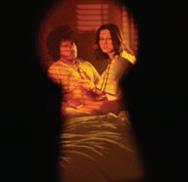
On March 21, American singer Selena Gomez and American record producer Benny Blanco released their new album, “I Said I Love You First” (ISILYF), and while the collaboration did contain some touching lyrics, it will ultimately fall short of listeners’ expectations.
The pair, who got engaged in Dec. 2024, have been working together for quite some time, first working together on Gomez’s second studio album, “Revival.” However, the same production that catapulted songs like Gomez’s 2015 hit “Kill Em With Kindness” to the top of the charts is missing from “ISILYF.” Instead, it’s filled with bland instrumentals and vocals that just aren’t good enough to distract from the album’s inconsistent sound.
That being said, “ISILYF” does have some good qualities. “Scared of Loving You,” which is the album’s 14th track, is one of the high points, with heartfelt lyrics and an emotional bridge.
Overall, though, the album unfortunately lacks any real substance and listeners would be better off revisiting one of Gomez’s older albums.
Adah Hamman, Variety Editor


“Anytime you come back from 3-1, it feels good.”
Photo by Wyatt Meyer
“We know we can score. We’re a confident team and are (confident) in our go-to guys,” Rock Lobsters head coach Steve Martinson said.
Featured: EYES ON THE PRIZE: Athens Rock Lobsters forward Malik Johnson chases down the puck during the Lobsters’ game against the Monroe Moccasins in Akins Ford Arena on Feb. 28. Athens came from behind twice to win on a penalty shootout after the game fi nished 3-3 in regulation.
Sports Staffer Sam Harwell discusses the increase in usage of sports gambling apps and their negative impact on sports culture and society.

BY SAM HARWELL Sports Staffer/Illustrator
Three times. It’s Nov. 28, and the Miami Dolphins have been on Green Bay’s 1-yardline three times in a singular game and failed to score a touchdown each time. They’re trailing, 30-17. But they just can’t get in the endzone, and they lose the game.
Any average fan would be disappointed, but some have gone above and beyond, and bet their entire paycheck that Miami would win. Now not only are they devastated, but so is their wallet.
All because the fans fell for their trap.
Do the phrases “Download BetMGM and get $100 dollars in free bonus bets!”, “People who played DraftKings won over $10,000 dollars!”, or “With FanDuel, anything can happen!” sound familiar?
sports betting network, as well.
It’s even taken over restaurants, with establishments such as Buffalo Wild Wings and Dave and Busters partnering with gambling sportsbooks. But besides the business, sports gambling is also a destructive and addictive habit.
According to the Mental Health Foundation, long-term effects of gambling of any kind include low self-esteem, anxiety, and depression, as well as increased risk of suicidal thoughts. But is it dangerous if you’re doing it for fun?
Clarke Central High School senior Quentin Makin has always been a fan of sports, more than the average person. So when he turned 18, he started placing bets on games with his friends.
the business,
“(Betting) definitely makes (sports) more interesting,” Makin said. “It’s fun, nothing getting in too extreme. It’s really just a fun hobby.”
gambling is also a destructive and addictive habit.
These betting companies hide the potential consequences of gambling behind their flashy advertisements framing sports gambling like some sort of game, with football players and celebrities endorsing the product. And it definitely works.
According to ESPN, in 2019, sports betting companies made $1 billion dollars on sport bets. In 2023, that number increased to $10.92 billion, and in 2024 that number skyrocketed to $40 billion.
The sports gambling craze has gotten to the point where gambling has gone airborne. In Jan. 2025, sports betting app DraftKings proposed a deal with Delta Airlines to allow gambling while on flights, which is currently illegal in the U.S. ESPN has also made similar deals with gambling giant PENN Entertainment, turning what used to be a sports broadcasting network into a

Sports betting can be a good way to spend some money, as long as it’s in moderation, which is the case with students like Quentin. However, the risk is always there.
“People set their money limits different, and you can get carried away,” Makin said. “(Sports gambling) can hurt you if you’re not being careful about it, and it can become a stressor, instead of something that should be enjoyable.”
Sports gambling has become exceedingly popular in recent years, and, by the looks of it, will continue to do so. There are serious dangers associated with gambling, but there are ways to combat addiction, such as the 24-hour gambling addiction hotline at 1-800-426-2537 or Gamblers Anonymous, a group dedicated to growing from shared gambling trauma. Further resources can be found on the National Council on Problem Gambling website.
Gambling can be pursued in small amounts with few repercussions, but should be approached with caution.



If you’re having suicidal thoughts, call the Suicide Hotline at 988 for help. At CCHS, students struggling with their mental health should schedule an appointment with a mental health counselor.
To know Malachi McNeill as a Clarke Central High School student was to know the name on the back of his letterman: Maly. Maly was the football team’s lockdown cornerback, the popular kid in the halls, the star who had it all figured out. Those around him sang his praise –Maly was meant to be a football player. Maly could play at the next level. Maly was a selfproclaimed “god” with a dream. Away from Maly, though, Malachi was slipping. Caught up in a life that wasn’t his own, Malachi turned to smoking to dull his pain and to block out his heavy thoughts, moving through life with no plans, no purpose. Then, senior season. An ankle injury that meant no more football, no more Maly.
WYATT MEYER
COOPER JONES
Malachi McNeill stands on Mitchell Bridge, a structure of imposing concrete looming high over Georgia Interstate 10, examining the blur of traffic 40 feet below. One thought creeps into his mind: “I’m going to do it.”
Malachi found himself in a deep depression, drifting through life in a fog, not recognizing who he’d become, living simply to work and eventually unsure whether he wanted to live at all. As high school ended, Maly was left behind for good. And so, in the summer of 2023, a freshly-graduated Malachi McNeill stood on Mitchell Bridge, considering the jump and its consequences, trying his best not to think about the scars the decision would leave on the people that loved him. But something was there to hold him back. Maybe fear, maybe hope. After all, there were people that loved him, and in that moment, Malachi turned away from the concrete railing and continued his walk to work. In the weeks and months after deciding to live, Malachi moved back and forth between Athens and Atlanta, staying with different friends and family. He floated, working different jobs, fighting both with the people around him and his own thoughts. Six months and six different homes after graduation, back in Athens, Malachi knew something needed to change. Malachi found time to reflect, found comfort in solitude, began
To Get Out,” at a suicide prevention night at Hendershot’s Coffee, reflecting on “getting ready to tip over” as a metaphor for his own journey with suicide. He started his “Let’s Talk Life Podcast,” where he speaks with guests and shares his own experiences with mental health to understand his struggle. Malachi found that living for God, seeing things through “His” perspective, was most fulfilling, and he found a way to live happily. Malachi returned to Mitchell Bridge in January for the first time since he nearly jumped less than a year earlier. He watched commuters pass beneath him and saw it not as an ending, but proof that he made it through. “I was so grateful and at peace looking over the bridge, knowing that deep in my heart, I’m so happyand I mean genuinely happythat I did not make that attempt,” McNeill said. Malachi McNeill is more than a football player, more than Maly. And he knows –he’s alive for a reason.
to find purpose.
In September 2024, he read his first poem, “Dying

Photo by Wyatt Meyer
I’m coming out of this dark place, still tried to take my life. It was by the grace of God I didn’t, because I wouldn’t be here to tell this story right now,” McNeill said.
30. McNeill struggled with suicidal ideation after he graduated from CCHS. “Even knowing that
McNeill, a former varsity football player, holds his helmet to the sky on Mitchell Bridge on Jan.
Featured: LOOKING TO THE PAST: Clarke Central High School Class of 2023 alumnus
Malachi

CCHS Class of 2023 alumnus Malachi McNeill has found purpose in life after dealing with depression and suicidal ideation.

During his tenure as CCHS boys varsity soccer head coach, Chris Aiken has built a team culture so strong that former players return to join his coaching staff.
The late afternoon sun sets below the horizon, casting shadows over the soccer fields of Clarke Central High School. On the sideline, CCHS head boys junior varsity soccer coaches Augie Koons and Thadd Pruitt guide their players through drills.
Just a year ago, they were the ones running these same drills as seniors. Now, they’re leading the next generation under the mentorship of the man who coached them.
Pruitt and Koons, now University of Georgia freshmen, played four years of high school soccer at CCHS, three and two years respectively on varsity under boys varsity soccer head coach Chris Aiken. For them, the decision to return as JV coaches for the 2024-25 season wasn’t just about their love for soccer but about carrying forward the culture Aiken has built over his 13 years at CCHS.
“All four years of soccer here were so fun. I wanted to come back and give other (kids) that (same) experience,” Koons said. “Getting another chance to be a part of this program is great and (to) be around this again is exciting.”
Since becoming the head boys varsity soccer coach in 2012, Aiken has created a program built on structure and discipline. From his Sunday emails outlining the week’s itinerary to the strict expectations in practices to pre-game preparations for all players–whether star players or rotation options–his
approach fosters accountability and consistency.
“It’s never the big things that make or break a season,” Aiken said. “It’s doing the little things right every day. (Many) players over my 13 years have appreciated that (structure) because (it) has come with a lot of success. (That culture) keeps growing each year.”
“The structure of everything we did here had me a lot more focused with everything. I wanted to do better (in my life) and get all my schoolwork done.”
-- Augie Koons, CCHS head boys JV soccer coach
Koons says that Aiken’s structured approach has made a lasting impact on him not just as an athlete but also as an individual navigating academics and life.
“I know (the effects of the structure) from just the difference between fall season (at Athens United Soccer Association)–the club season–and spring season,” Koons said. “The structure of everything we did here had me a lot more focused with everything. I wanted to do better (in my life) and get all my schoolwork done.”
Pruitt and Koons are not the first former Gladiators to return to coach under Aiken’s program. Most recently, Uche Onunkwo, a CCHS Class of 2020 alumnus, coached JV for the 2023-2024 soccer season. Like Pruitt and Koons, Onunkwo wanted to coach to give back to the program that shaped him.
“(CCHS soccer) is a great organization and (it’s) nice to be around Coach Aiken,” Onunkwo said. “The No. 1 reason (I came back was) if you act a certain way, you know what’s going to happen. If a star doesn’t come to practice, you’re not going to play. (Aiken) has set rules, and adheres to them. It doesn’t flex.”
Onunkwo, Pruitt and Koons are the latest in a growing tradition of former players returning under Aiken. In total, six former Gladiators have come back to join his staff. In 2018, five years into his tenure, Aiken welcomed back his first former player, Cole Wilson, as a JV coach. Four years later, Tristan Trevino and Gave Arcos joined as varsity assistants, continuing the cycle.
“I’ve been fortunate a lot of my players have stayed or moved back to Athens. I (have always) found a way to get them involved–JV or varsity,” Aiken said. “A lot of them (use) that role to build on their resume and (move) on to bigger things. I look forward to continue building (that).”
The impact of JV as a foundation for varsity is clear for current players. Isham Koons, a sophomore who played under Onunkwo last year before being moved up to varsity mid-season, saw firsthand how the program prepares players for Aiken’s system.
“(The team) is an extension of family. You spend so much time with these kids–we see each other 16-20 hours a week. It might be more time than I spend with my own kids.”
-- Chris Aiken, CCHS head boys varsity soccer coach
“It’s fun to see all these alumni coming back to coach junior varsity,” Koons said. “They know what Coach Aiken wants (and) what he expects. They know how to really train kids and develop them.”
Aiken’s influence extends beyond tactics and game-day preparations. His players describe the program as a second family, a sentiment reinforced by the hours they spend together.
“(The team) is an extension of family. You spend so much time with these kids–we see each other 16-20 hours a week,” Aiken said. “It might be more time than I spend with my own kids.”
For Pruitt and Koons, the trust and chemistry they built over the years playing together didn’t end with their final game. That same bond led them to become roommates at the University of Georgia, carrying their shared experiences beyond high school and into college life.
As Pruitt and Koons step into their leadership roles, they are not just preserving Aiken’s legacy: they are becoming part of it.
“You can achieve on-field success and pat yourself on the back, but getting to know that you impacted someone and using the experiences that you gave them to benefit their own life is very rewarding for me,” Aiken said.


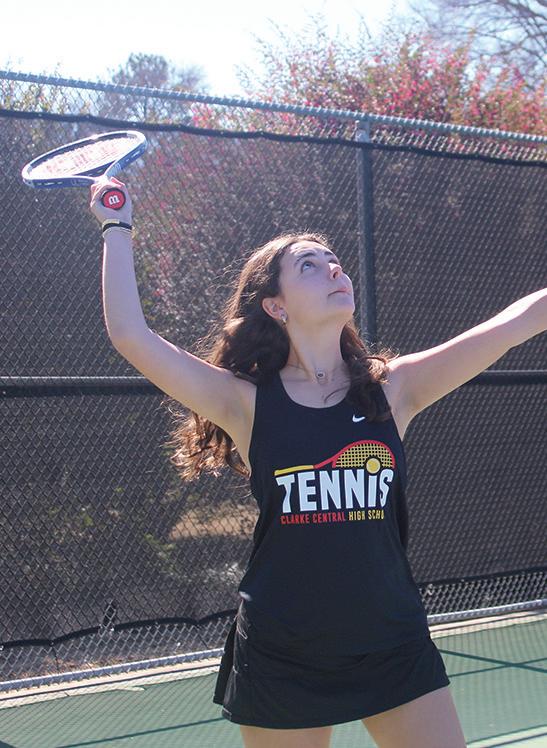

Grade: 10 GPA:3.14
Game day ritual:II lock in and listen to rap music,meditate a little and eat a lot of candy –(specifically) Sour Punch (Straws).
Role Model:I would say (CCHS freshman) Ryker Comstock.He’s always pushing me, especially in workouts.When we’re (at) meets and I see him, he’s like,‘Push!’”
ODYSSEY Star Players are selected based on their academic standing and commitment to teammates, their sports program and Clarke Central High School. Star Players are written for each issue by the Sports Staff based on interviews with players and coaches.
Grade:12 GPA:4.00
Game day ritual:I’ll go home and eat a burrito bowl to give me energy or protein.Then I’ll get ready,and I usually eat one of our sweet treats that (assistant varsity tennis) coach EvanAdams’ mom makes for us. (Lastly),I just stretch.
Role Model:My role model is CoachAdams. She’s just so strong and encourages us to be the best version of ourselves on and off the court.
Years of experience:6
Favorite memory:My favorite memories from tennis are probably during team dinners.It’s a chance for us to really hang out and bond together,which is something I really look forward to.
What coaches say:Both academically,socially and athletically,Riley (is) a quiet leader.The girls just really look up to her,and she’s always worked so hard no matter what position she’s been in.
-- Head varsity tennis coach Elliot Slane
Years of experience:3
Favorite memory:Going to state my eighth-grade year (because of the) memories.It was just exciting being there at the meet and just seeing people race.
What coaches say: Bryan (has) been doing a great job (coming) over from wrestling.He’s a great person (and) teammate.He’s always in a happy mood,encouraging his teammates and (doing) what he’s supposed to do. (On) his first meet back,he ran a good leg,gave it his all and didn’t have any excuses.
-- Assistant varsity track and field coach Lee Patterson


By Lydia haag, as told to Sam Harwell


I feel like lots of people, even me, are like, ‘Oh, that’s not something I would try.’ But then, once I did it, I found out that it’s a good fit for me, and I really like it. I feel like it would be great to see the girls team grow and have more people. I think the biggest obstacle in that is the mindset of people who think (wrestling is) not what they want to do.
Meets are a lot of fun because you get to hang out with people all day long. You get to cheer on your teammates and you really get to feel, even though (you’re) one person, like you’re part of a bigger thing. When everyone cheers you on, even if you lose, they’re supportive. (They’ll) tell you there’s something you can do differently or something you did good at, so you’re just building each other up.

It was really great to win for (the first time). Leading up to it, my teammates were like, ‘I know you’re gonna get it, you’re got this.’ You can really feel them supporting you. Afterwards I was like, ‘Oh, my gosh.’ That feeling of success after you (win) comes in your body, knowing that everybody was rooting for you.
When you’re wrestling, I feel like you have to just know what you’re going into. For me, I’m really nice. but when I’m doing this, I’m going to change that mindset. You gotta walk in and just be like, ‘This is what I’m gonna do.’ (Wrestling is) physical, but it’s also mental. If you don’t have a good head space, you’re won’t have fun and won’t be able to succeed.
Wrestling isn’t like anything else I’ve done, but sticking with it has been really rewarding. I’m glad that I chose to keep coming. It would have been easy to say, ‘This is hard, I don’t want to come every day, this isn’t what I want to do,’ but sticking with it was rewarding.

Featured: SUPPORT IN SOLIDARITY: Clarke Central High School girls varsity wrestler Lydia Haag, a freshman, poses in the CCHS Wrestling Room on March 17. Haag began wrestling after being encouraged to join the team by CCHS head varsity wrestling coach William Lance, who has coached her in softball for two years. “I think it’s different, especially with the girls (team), because there are not as many people, so it’s a smaller group, but the girls give each other a lot of support,” Haag said. “There are only five girls and there are a bunch of guys, so (we) have to build each other up.”
